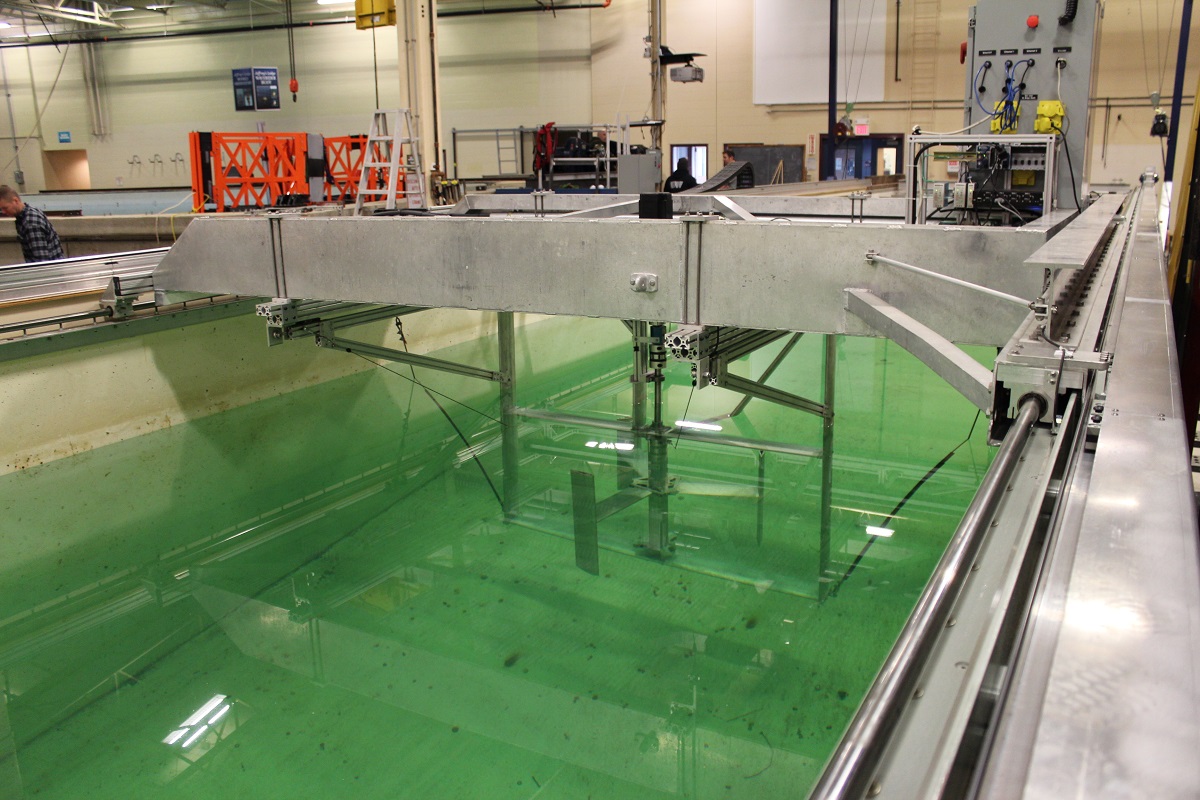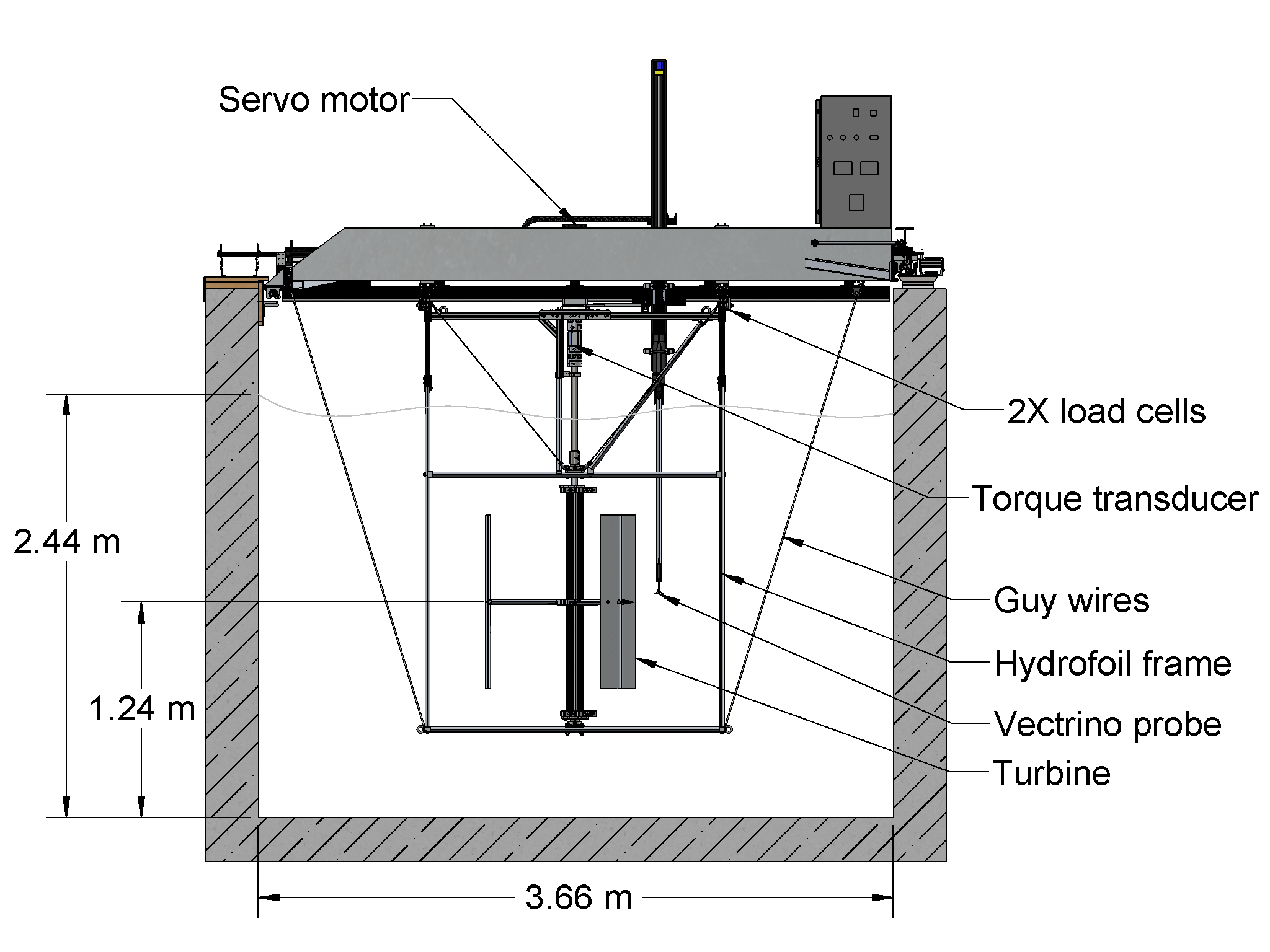Turbine test bed

The UNH-CORE turbine test bed was originally designed and built in 2010, then upgraded in 2012 along with the tow tank’s motion, control, and data acquisition systems. The turbine test bed provides infrastructure for measuring the performance and near-wake flows of turbines at moderate Reynolds number. To date, the system has mainly been used with vertical-axis (cross-flow) turbines, though it has also been used to test FloDesign’s Mixer-Ejector axial-flow hydrokinetic turbine.
Specifications summary

| Turbine frontal area (nominal) | 1 m2 |
| Max power dissipation | 1 kW |
| Max RPM | 300 |
| Cont. stall torque | 240 Nm |
| Peak stall torque | 818 Nm |
| Max measured torque | 200 Nm |
| Max measured drag | 4400 N |
See the tow tank specifications for more information.
Loading and control
The turbine is loaded via a Kollmorgen AKM62Q servo motor, powered by a Kollmorgen AKD servo drive and controlled by the tow tank’s main motion controller over the EtherCAT network. Loading the turbine in this way provides precise control over the turbine tip speed ratio. By default, the turbine is commanded to “jog” at a constant speed by the controller. However, open-loop, or “torque mode” operation is also possible.
Instrumentation
The main frame is constructed from extruded aluminum NACA 0020 hydrofoil sections, and mounted to two drag slide assemblies, each of which can measure up to 500 lbf drag force. An Interface T8 200 Nm inline torque transducer is used to measure torque. Additionally, the turbine servo motor is mounted on a slewing ring bearing, such that its moment loading is transferred to a load cell mounted at a known fixed distance, providing redundancy in torque measurement.
Software
See TurbineDAQ for a desktop GUI application used to operated the system.
